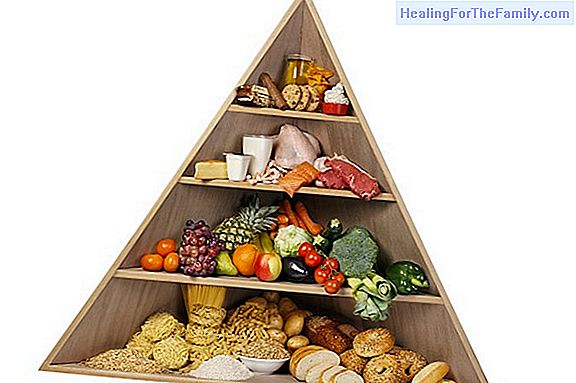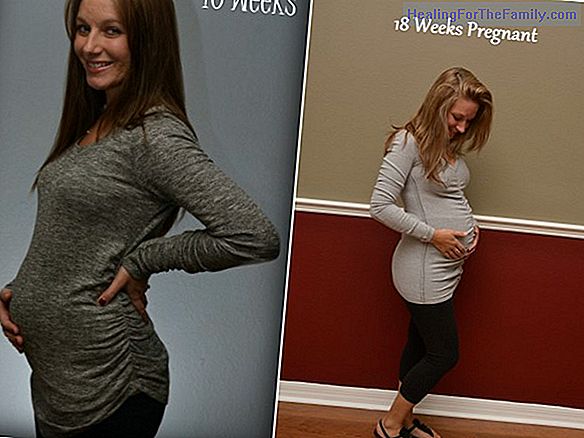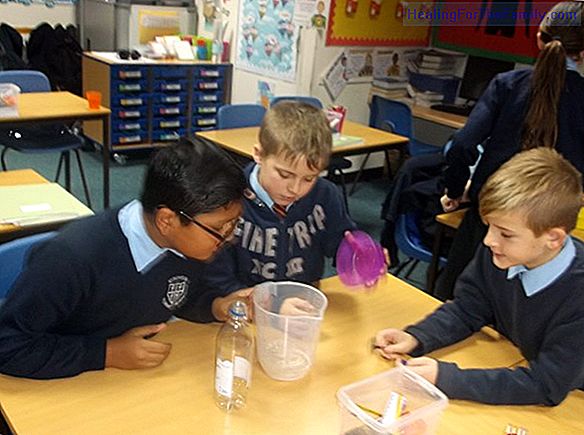Pediatric check-ups in the first year of the baby's life
Health care for children is currently a basic element of Primary Health Care. The implementation of the Healthy Child Program, for more than a decade, has made primary prevention possible, since the main causes of mortality are related to habits that begin to develop in childhood. This Child Health
Health care for children is currently a basic element of Primary Health Care. The implementation of the Healthy Child Program, for more than a decade, has made primary prevention possible, since the main causes of mortality are related to habits that begin to develop in childhood.
This Child Health Protocol is divided into three periods with different specific objectives regarding the detection of diseases and child care.
Objectives of the pediatric checkups of the baby

0 to 23 months. It is focused on the prevention of infectious and congenital diseases. It facilitates the adaptation of parents to the care of the baby.
The general objective is to achieve a high degree of health in the child population, reducing their morbidity and mortality through primary and secondary prevention. While the specific objectives are:
- Promote healthy habits in the pediatric population
- Encourage an adequate family and social environment
- Prevent the emergence of infectious diseases through vaccination
- Perform early detection of congenital anomalies and risks for the Health.
Primary Care centers, therefore, have established a calendar of recommended reviews, which are based on the child's age, with basic contents adapted to normal development. To have a reference of when the visits to the pediatrician touch, this is the calendar of the healthy child:
Review of the newborn baby
It must be carried out between the fifth and the tenth day of life. It is advisable that the pediatrician and the nurse work together to establish the first contact with the parents of the child. From the fifth day of birth, at the health center, second heel test. The results will arrive at the house in the following month and will indicate if the child has phenylketonuria, a metabolic disease that treated in time has a very good evolution and leaves no sequela.
The opening of the clinical history is done taking note of the maternal obstetric history (gestations, abortions, live births), the history of pregnancy, the perinatal history (gestational age, type of delivery, Apgar test, resuscitation, weight , height and perimeter
cephalic, weight at hospital discharge, pH and blood group, emission of meconium and diuresis, jaundice) and family history (consanguinity, diseases). The attitude towards breastfeeding and the type of lactation is also valued; the presence of vomiting and / or regurgitation and the characteristics of voiding (voiding stream in males) and bowel movements.
To prevent rickets, it is recommended that, during the first year of life and from the second or third week, 200 to 400 IU of vitamin D per day are required, since not always the baby's sun exposure is adequate, although controversy exists at this point.
Review in the first month of the baby
Check the immunization schedule. Children born to mothers with hepatitis B virus should be given the second dose of hepatitis B vaccine at one month of age. Annotation of percentiles of weight, height and cranial perimeter. Physical, visual and auditory exploration. Special attention to the coloration of skin and mucous membranes (perfusion, hydration, jaundice, pallor, angiomas, nevus ...), to the head (fontanelles, sutures, deformity of the head by decubitus), neck (masses, mobility), cardiopulmonary auscultation and palpation of peripheral pulses and the neurological system (attitude, tone, mobility and reflexes). Assessment of psychomotor development (keeps the head,
follows a light, reacts to sounds). Tips to prevent the Sudden Infant Death Syndrome.
Review in the second month of the baby
First vaccines of the baby, according to the Vaccination Calendar of each Autonomous Community. Normally, after two months you will receive the second dose of Hepatitis B, Diphtheria, Tetanus, Acellular Pertussis, Haemophilus Influenzae b, inactivated Polio and Meningococcus C. It is confirmed that the baby develops within the normal parameters of his age taking note of its weight, size and cranial perimeter. Their reflexes and their reaction to stimuli are checked. A vitamin D supplement is recommended to prevent rickets.
Review in the third month of the baby
Administration of the vaccines corresponding to their age: vaccines against Diphtheria, Tetanus, acellular Pertussis, Haemophilus Influenzae b, inactivated Polio and Meningococcus C. The existence of other vaccines should be informed that Included in the calendar: 7-valent Pneumococcus. A physical examination will be performed with special attention to fontanelles, hips, genitals and psychomotor development. Eating guidelines, tips to prevent sudden infant death, psychomotor stimulation and prevention of dental caries.
Review of the baby's 6 months
The baby will receive another dose of Hepatitis B, Diphtheria, Tetanus, Acellular Pertussis, Haemophilus Influenzae b and inactivated Polio vaccines. The existence of other vaccines that are not included in the calendar, such as 7-valent pneumococcus, will be reported. The physical examination will focus on fontanelles, hips, genitals, psychomotor development. Eating guidelines, tips to prevent sudden infant death, psychomotor stimulation and prevention of dental caries.
Review of the 9 months of the baby
Physical exploration and attention to health education: nutrition, prevention of accidents, prevention of passive smoking, care and hygiene (bathing and daily walks), promoting autonomy and self-esteem, strengthening the affective bond and prevent dental caries preventing the child from sleeping with a bottle in the mouth.












